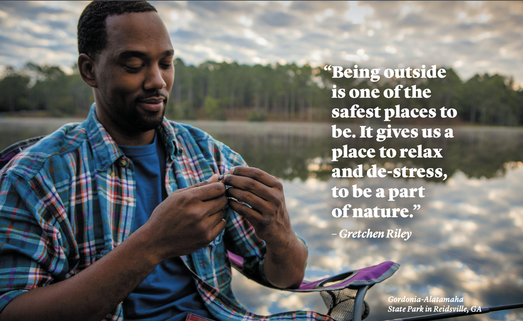TREES + PUBLIC HEALTH
=The Perfect Conversation Starter
A new campaign promotes the health benefits of forests
By Stasia Kelly
Summer 2021
Summer 2021


|
Georgia Forestry Magazine is published by HL Strategy, an integrated marketing and communications firm focused on our nation's biggest challenges and opportunities. Learn more at hlstrategy.com
|
